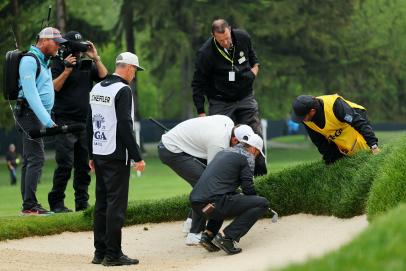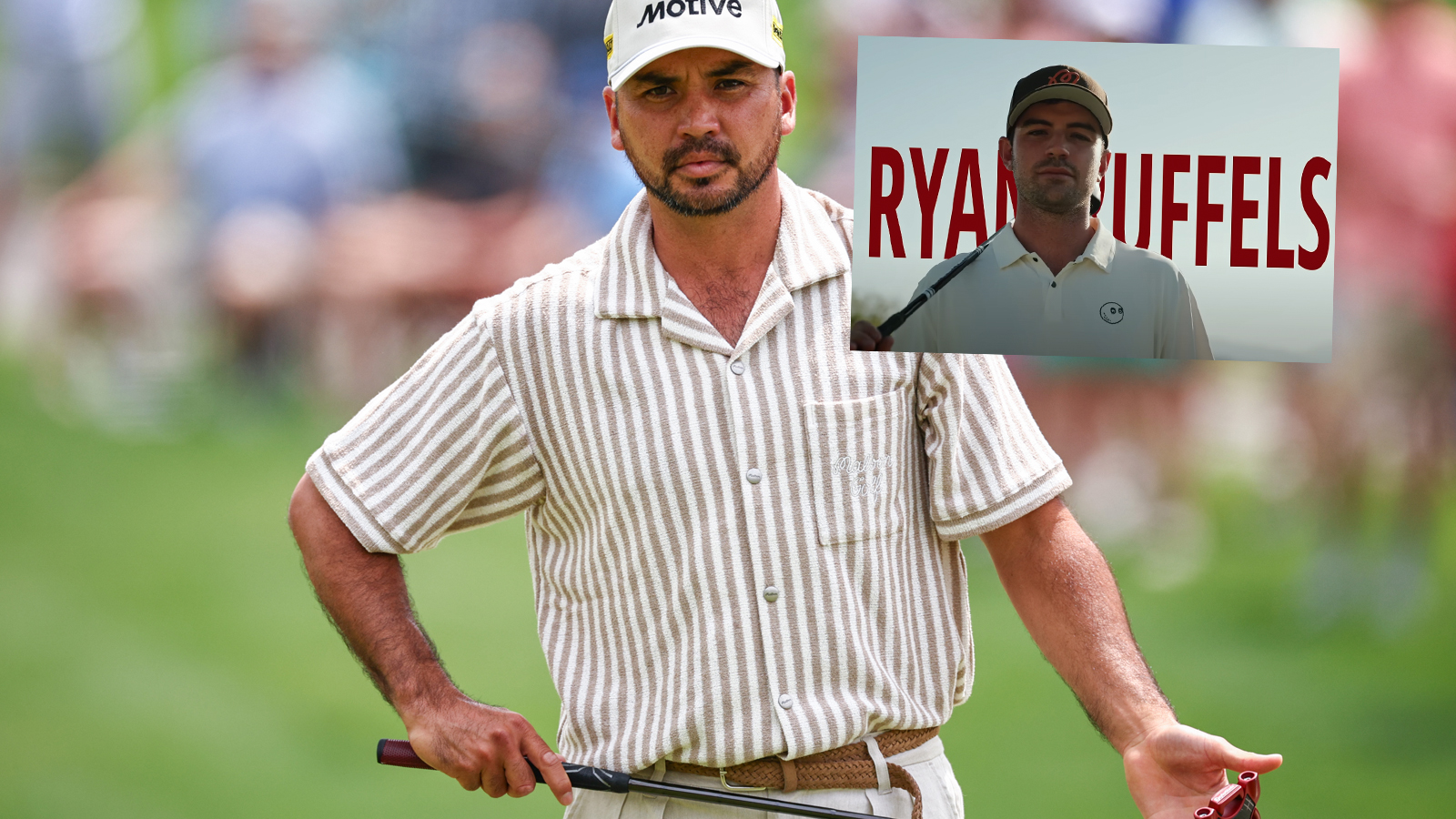Rules of Golf Review: It’s one of the most loathed rules in golf. So why again can’t you take free relief from a divot hole? – Australian Golf Digest

- by Admin
- May 29, 2024

Whether you’re new to the game or have been playing it for years, you’ve probably experienced the deflating feeling of hitting a great drive that splits the fairway only to find once you’ve gotten to your ball that it’s sitting in a hole created by someone else’s shot. Although not impossible to play out of—you can read Butch Harmon’s advice on how to do it here—it’s still a frustrating situation. You did everything right, yet it feels like you’re being unjustly penalized.
It’s at those moments when you might wonder why the Rules of Golf doesn’t allow you to take free relief. After all, Rule 16.3 allows you to remove an embedded ball anywhere in the general area of the course without penalty. How is this any different, you might wonder?
Let’s have Craig Winter, Senior Director of Rules of Golf and Amateur Status for the USGA, explain:
“It’s fundamental to golf to play the ball as it lies,” he says. “And you don’t always get a good lie.”
Although the USGA and R&A, golf’s governing bodies, have considered on various occasions handling divot holes in another manner, there is no “practical solution” other than to leave it as just a part of the game, Winter says. If you think about it beyond the moment you’re in one, how often does it happen to you in any golf season? Probably not a lot. Furthermore, if the rules makers were to treat divot holes as, say, ground under repair, think of how many spots on the fairway would then fall into that category? They’re all over the place. They take a long time to heal, and they typically are not a focus of normal golf-course maintenance.
More From Golf Digest Rules 101 Rules Review: How can I possibly know ‘exactly’ where my ball crossed into a penalty area?  Rules Are you smart enough to ace this basic Rules quiz?
Rules Are you smart enough to ace this basic Rules quiz?  The Long Game Our company Match Play tournament is the ultimate handicap system stress test
The Long Game Our company Match Play tournament is the ultimate handicap system stress test
For these reasons, don’t expect the “play it as it lies” fundamental to change anytime soon, if ever. Winter says new members of the rules committee want to discuss it from time to time, but it doesn’t go beyond that.
“Philosophically, it’s hard to think of a different way we’d want to go,” he says.
And remember the next time you’re in one, things could be worse. Just ask Jordan Spieth about his Sunday round at the Sentry Tournament of Champions in January. He found his ball in a divot crater on three consecutive holes down the stretch!

Jordan Spieth plays his approach shot out of a divot hole on the 16th during the final round of The Sentry in January.
Kevin C. Cox
“The [divots] were certainly tough breaks because they were balls that hit in the fairway and funneled into them,” Spieth said. “Out here, balls funnel into the same spots a lot. It’s not uncommon to be in divots. It kind of stunk that it was three holes in a row, but I still played [them] just fine.”
MORE GOLF DIGEST RULES REVIEWS
What do I do if my ball just hit another ball on the green?
Can you chip a ball on the tee while waiting for the group ahead of you to play?
I hit myself with my own ball. Is that a penalty anymore?
What exactly is an embedded ball?
I hit a horrible shot. I’m way better off if I don’t find it. Can I just declare it lost?
When does the three-minute search time for a lost ball actually begin?
Does a ball have to be unplayable to declare it unplayable?
I accidentally hit my ball with a practice stroke … does it count?
I’m on the green. My opponent is not. Who’s away?
I bent my putter and it actually works better. Can I still use it?
Somebody just picked up my golf ball! Now what?
More From Golf Digest  Golf Digest Logo Butch Harmon breaks down Stephen Curry’s ‘excellent’ golf swing
Golf Digest Logo Butch Harmon breaks down Stephen Curry’s ‘excellent’ golf swing  Golf Digest Logo Stephen Curry wants to make golf blacker and browner, and raise his game, too
Golf Digest Logo Stephen Curry wants to make golf blacker and browner, and raise his game, too  Golf Digest+ Member Benefits
Golf Digest+ Member Benefits
This article was originally published on golfdigest.com
The Latest News
-
December 24, 2024PNG-Australia NRL Deal: K1.7 billion economic boost and 10,300 jobs expected
-
December 24, 2024Christmas Day Tennis: 5 times Australian Open was held over December 25th
-
December 24, 2024Australian football team set to play Nantwich during UK tour
-
December 24, 2024Australian teenager to become youngest Test batting debutant in 71 years
-
December 24, 2024Andrea Petkovic has changed her predictions over how Iga Swiatek is going to do at the Australian Open in 2025





